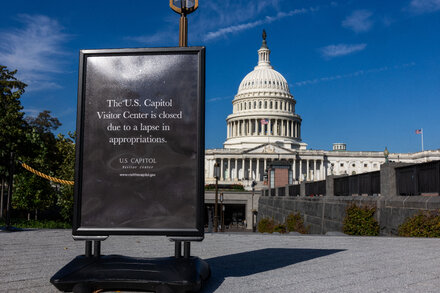The federal government entered a partial shutdown on Wednesday, creating a patchwork of directives for federal employees and largely subdued effects on public services during its initial day. This suggests the full weight of the funding lapse has yet to be widely felt.

WASHINGTON – The federal government entered a partial shutdown on Wednesday, as lawmakers failed to agree on a new spending bill by the midnight deadline. The first day was marked by a patchwork of directives for federal employees and a largely subdued impact on public services, suggesting that the full weight of the funding lapse has yet to be felt.
Mixed Signals for Federal Employees
For hundreds of thousands of federal workers, the day began with uncertainty and confusion. Many received last-minute notifications regarding their employment status, with some deemed “non-essential” and placed on immediate furlough without pay, while others were instructed to report to work as “essential” personnel.
Agencies across the government implemented varying protocols, leading to frustration among the workforce. “I woke up not knowing if I still had a job today, or if I would be paid for the work I did last week,” said Maria Rodriguez, a policy analyst at a non-defense agency, who spoke on condition of anonymity. “The communication has been incredibly inconsistent, leaving us all in limbo.”
“I woke up not knowing if I still had a job today, or if I would be paid for the work I did last week. The communication has been incredibly inconsistent, leaving us all in limbo.”
Essential personnel, including those in critical national security, public safety, and health care roles, largely remained on the job. However, questions persist about when they will receive their pay, a common point of contention in previous shutdowns.
Limited Immediate Impact on Public Services
Despite the halt in government funding, the immediate effect on the general public appeared minimal on day one. Many widely used federal services continued operating, often due to available carryover funds or the essential nature of their functions.
Mail delivery proceeded as usual, as the U.S. Postal Service is largely self-funded. Airport security screenings by the Transportation Security Administration (TSA) and air traffic control remained operational, staffed by essential employees. National parks saw varying degrees of access; some remained open with reduced services, while others closed visitor centers and certain areas.
New applications for passports or visas might experience delays, but processing of existing applications largely continued. Federal courts also remained open for a limited period, utilizing fee revenue and other funds, though long-term operations would be threatened by a prolonged shutdown.
“We understand the public’s concern, but our initial assessments show that critical services are largely uninterrupted. We are working diligently to ensure that essential functions continue without significant disruption while Congress resolves this situation.”
Economists and government officials noted that the real economic and social impact of a shutdown tends to accumulate over time, with each passing day increasing the potential for disruptions to ripple through various sectors, from federal contracting to small business loans and scientific research.
Outlook Remains Uncertain
The shutdown began after last-ditch negotiations on Capitol Hill failed to bridge divides between the White House and Congressional leaders on budget priorities. Both sides issued statements expressing regret for the situation but remained firm on their positions, offering little immediate hope for a quick resolution.
As the government moves into its second day of the funding lapse, attention will turn to whether the “limited impact” observed on day one will begin to escalate, particularly if non-essential services remain shuttered and the uncertainty for federal employees deepens.
Source: Read the original article here.




